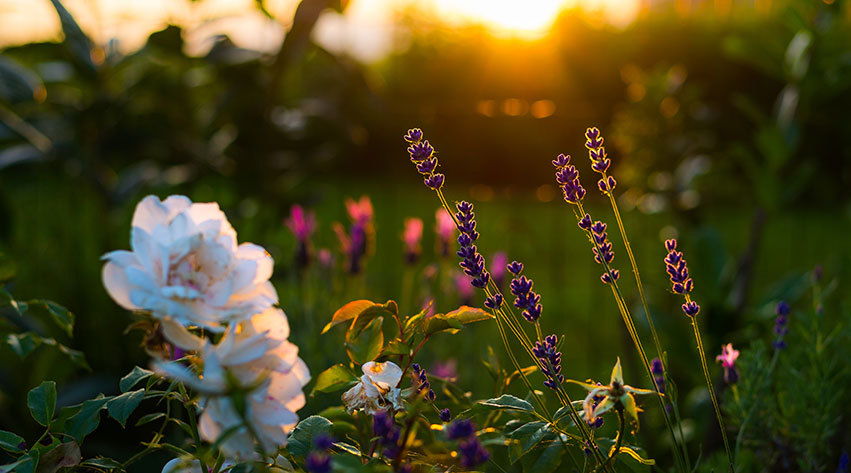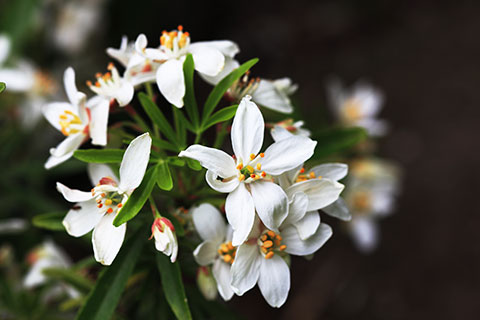- Prairie plants don’t like shade so be sure to choose a sunny, open spot and remove all weeds before planting.
- If you don’t actually have a prairie, wisely utilising the space you have is essential to recreate this look. Keep in mind that around 15 plants is a good number of varieties for a small prairie garden, and discipline yourself to plant in groups of seven or nine, one-third ornamental grasses to two-thirds hardy perennials.
- Use grasses to create height and texture and giant plants too add wonderful drama to a prairie garden.
- Repeat plant types around the garden to create a cohesively wild look. That might sound counter intuitive, but each section of the garden should echo another section in a prairie garden.
- Plant in sausage-shaped drifts and focus on contrasting height texture and form. Colour doesn’t need to be as much of a focus when recreating this style.
- If you’re keen for colour but want to stick to the style, flowers should be planted in masses and drifts of shades to create drama and impact in the garden. Your drifts and masses should be over-seeded with a non-competitive prairie grass (such as Sideoats Grama) as this will help to control weeds.
- Using plants of the same colour but in different forms are another way to display a unity within your garden without being regimented. The sunny blooms of Helianthus ‘Lemon Queen can echo the autumnal hues of Amsonia hubrichtii, while pastel pinks can appear in Veronicastrum virginicum ‘Diana’ and Allium ‘Summer Beauty’.
- Focus on growing herbaceous perennials and grasses in abundance to create the naturalistic look of a flowering grassland. Planting a combination of flowers and grasses together will help with the meadow effect too.
- Plants that look attractive after they have died back as well as when they are in flower are an essential addition to create the meadow pasture style. Tall seedheads can look particularly magnificent after a frost.
- Experiment! One of the real luxuries of a garden with a wild style is that you can take the time to figure out exactly what works and any “mistakes” won’t be noticeable. Enjoy the freedom that having a less regimented garden design brings.



Prairie garden
If Little House on the Prairie was your favourite series of books in your youth, you might well be interested in making your garden in homage to the novels. Maybe you never read the books but simply admire the prairie’s wild and wistful sense of nature and wish to recreate it in your own corner of land. The good news is, even if you don’t have access to a prairie in the deep south of America, it’s still possible to create a British garden with all the trappings of this traditional pasture with a little dose of dedication.
Before opting for this style of garden, you should be aware that the colours and scenes of the seasons are more obvious in this than any other. In the warmer weather, you’ll be rewarded with stunning colours and scents, but come winter, your garden will be starkly bleached by the cold climes. Be prepared to embrace plants at every stage of their lives in line with the ebb and flow of the seasons and you’ll be rewarded with months of interest and an ever changing palette in your garden.
Our top design tips
The finishing touches
Perhaps one of the most wonderful things about a prairie garden is the limited need for any finishing touches. It’s a treat to plant flowers and grasses that will run wild but still look incredibly beautiful without much maintenance. After planting, all you need to do is sit back, relax and watch the seasons unfurl in your stunning Prairie Garden.






